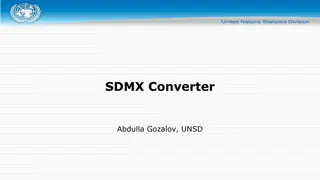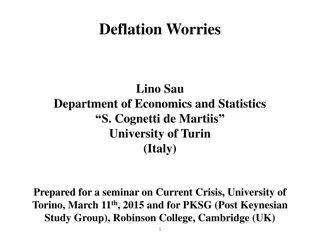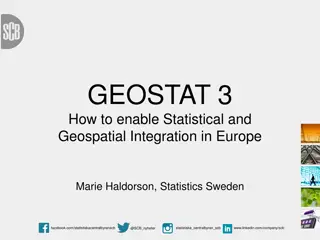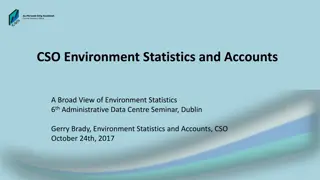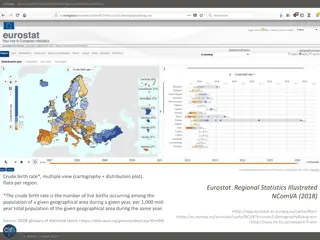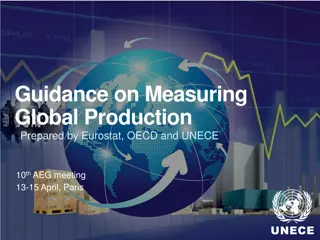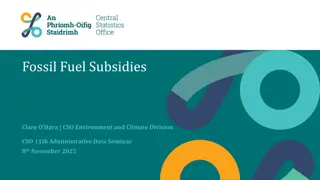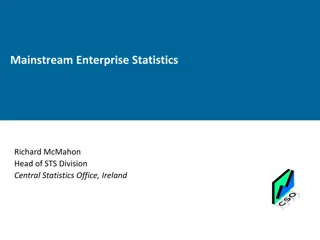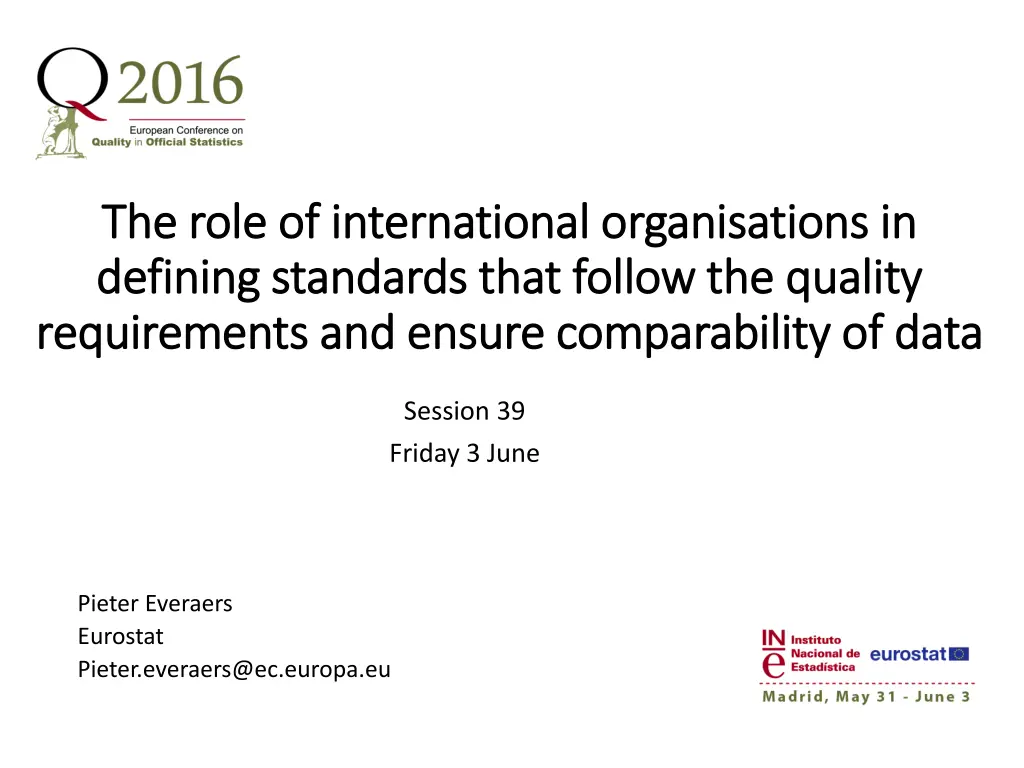
International Organizations Setting Data Standards for Quality Assurance
Learn about the role of international organizations in establishing data standards, ensuring quality, and promoting comparability for data organizations. Discover how statisticians contribute to policy-making through indicator selection and monitoring. Dive into the development and monitoring of global Sustainable Development Goals (SDGs) indicators.
Download Presentation

Please find below an Image/Link to download the presentation.
The content on the website is provided AS IS for your information and personal use only. It may not be sold, licensed, or shared on other websites without obtaining consent from the author. If you encounter any issues during the download, it is possible that the publisher has removed the file from their server.
You are allowed to download the files provided on this website for personal or commercial use, subject to the condition that they are used lawfully. All files are the property of their respective owners.
The content on the website is provided AS IS for your information and personal use only. It may not be sold, licensed, or shared on other websites without obtaining consent from the author.
E N D
Presentation Transcript
The role of international The role of international organisations defining standards that follow the quality defining standards that follow the quality requirements and ensure comparability of data requirements and ensure comparability of data organisations in in Session 39 Friday 3 June Pieter Everaers Eurostat Pieter.everaers@ec.europa.eu
Role Role of of statisticians statisticians - - indicators indicators for for policy policy making making e.g. global 2030 Agenda Reformulation Agenda setting Role of statistical community: (Help) select appropriate indicators Define international standards and ensure quality Ensure independent monitoring Statistics Politics Policy monitoring Research & negotiation Science Implementation Decision
Developing Developing global SDG list list and and SDG SDG monitoring global SDG indicator monitoring indicator March 2015: Technical report to IGN session 47th UNSC session; March 2016 adopts list of 241 List of preliminarily proposed SDG indicators June/July 2016 by ECOSOC & UN-GA during 2016 46th UNSC session; March 2015 June 2015: 1stIAEG-SDGs meeting in New York Adoption of indicator set Release of a global SDG report to be submitted to the 1stHLPF on July 2016 2020 Scaling-up of national, regional and global capacities to monitor the 2030 Agenda Consultation rounds on SDG indicator proposals indicators March-Dec 2016 October 2015: 2ndIAEG-SDGs meeting in Bangkok Possible release of national and regional SDG reports Consultation rounds on GREEN & GREY indicators IAEG-SDG report including final list of 241 proposed SDG indicators (Annex IV)
Different levels of SDG Different levels of SDG monitoring monitoring But also different dimensions: Geographic/regional Tier system Official vs non-official Institutional and contextual quality
17 17 goals goals, 169 , 169 targets targets 1 2 3 4 5 6 7 8 9 10 11 12 13 14 15 16 17 18 19 Goal 1 Goal 2 Goal 3 169 SDG targets Goal 4 107 substantive targets Goal 5 62 means of implementation Goal 6 Goal 7 Goal 8 Goal 9 Goal 10 Goal 11 Goal 12 Goal 13 Goal 14 Goal 15 Goal 16 Goal 17
and and 241 (global) 241 (global) indicators indicators! ! 1 2 3 4 5 6 7 8 9 10 11 12 13 14 15 16 17 18 19 Goal 1 Goal 2 Goal 3 Goal 4 241 SDG indicators Goal 5 98 (41%) indicators tier I Goal 6 50 (21%) indicators tier II Goal 7 78 (32%) indicators tier III Goal 8 15 (6%) indicators unrated Goal 9 Goal 10 Substantive target Goal 11 Means of implementation Goal 12 Goal 13 Goal 14 Goal 15 Goal 16 Goal 17
Quality Quality dimensions dimensions a) Readiness of the indicator (tier system) b) Geographical availability (UN regions are differently advanced in statistics) c) Thematic dimension (UN thematic agencies have different statistical skills) Example of dimension overlap: employment rate (a) under the supervision of the ILO (c) in Europe (b) is of high quality, but in another region may be of lower quality
Tier Tier system systemfor indicators indicators for SDG SDG Level of methodological development and overall data availability: a) Methodology exists and data are widely available tier I b) Methodology has been established but data are not easily available tier II c) Internationally agreed methodology has not yet been developed tier III
Quality levels Quality levels Conceptual Methodological Mathematical Institutional Contextual
A country A country- -lead process lead process - - what are the risks? what are the risks? Weak role of international organisations in reporting and monitoring Heterogeneous quality + conflict between agencies and countries' perceptions of quality Uneven methodological development Too many different channels (countries directly to "custodians", ONGs, etc.) Reporting burden for countries Lack of coordination among supranational, national and regional levels Diverse availability of basic data
What are the solutions? What are the solutions? Strengthening quality frameworks Specialised UN agencies as quality assessors Improve supervision by supranational bodies such as WorldStat
Role for the CCSA Role for the CCSA Reinforce implementation of FPOS to increase institutional quality (trust in the institutions) Ensure coordination Promote and support the required quality levels Enhance work on internationally comparable procedures Build consensus on a Quality Management System






